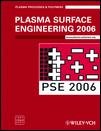Investigation of Antibacterial Activity on Cotton Fabrics with Cold Plasma in the Presence of a Magnetic Field
Abstract
It has been recognized that microorganisms, can thrive on a textile substrate. Natural fibers such as cotton are more susceptible than synthetics because their porous hydrophilic structure retains water, oxygen, and nutrients, providing a perfect environment for bacterial growth. A variety of antibacterial finishes have now been developed for application to textiles. Earlier efforts were based on insolubilization of inorganic compounds, like copper and other organometallic salts. Copper sterilization capabilities prevent the growth of bacteria, fungi, and germs. Low temperature plasma (LTP) is a useful technique for surface modification of polymers and textile fabrics in dry systems. In this study, we have used a DC magnetron sputtering system for creating antibacterial properties on cotton fabrics. A copper anode and cathode were used, and samples were placed on the anode. The cathode particles were scattered by attacking active ions, radicals, and electrons. Copper particles were deposited on the surface of cotton samples, and the antibacterial has been developed, through incorporation of copper particles on fabric surfaces. The antibacterial properties of the fabrics were connected with the presence of copper on their surface. After plasma treatment, the physical and chemical properties of the fabrics were examined by surface analysis methods and textile technology tests. Also the antibacterial efficiency was determined by the Halo method. The experimental work suggests that the change in properties induced by LTP can effect an improvement in certain textile products.




